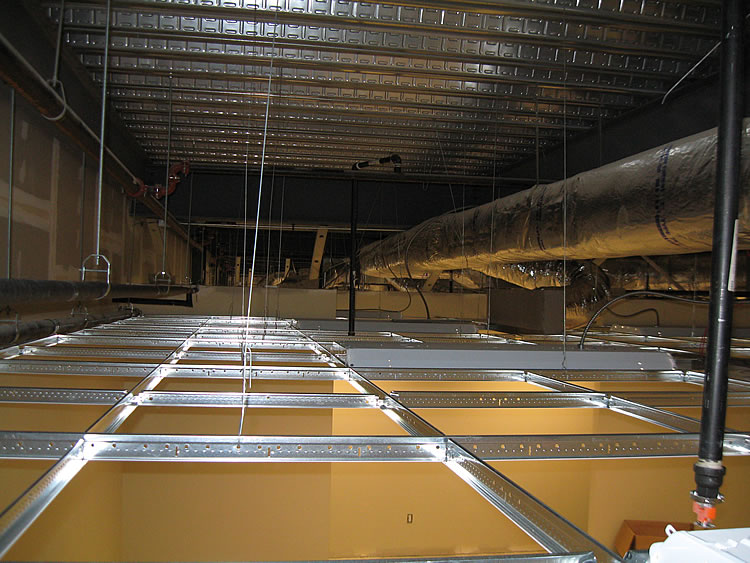

- #Installing suspended ceiling grids how to#
- #Installing suspended ceiling grids install#
- #Installing suspended ceiling grids crack#
#Installing suspended ceiling grids install#

The same principle applies to how ceiling tiles are stored away or staged awaiting installation. Regardless of material, ceiling tiles, especially rectangular-shaped ones, should be held with both hands in such a way as to support the tile evenly so that that bowing and flexing is minimized.
#Installing suspended ceiling grids crack#
Particularly in the case of 2-foot by 4-foot ceiling tiles, grabbing or holding a tile by its edge, especially the shorter one, can cause the tile to flex and possibly crack or break under its weight. However, they are also the most fragile and are easily damaged or broken. They are also typically the lowest cost option when it comes to drop ceiling tiles. Materials such as mineral fiber and gypsum are popular because of their great acoustical properties and their lightweight construction.

Improper handling of certain types of ceiling tiles can result in damage or breakage before they are even installed.
#Installing suspended ceiling grids how to#
Following are common problems or circumstances that can result in damaged or broken ceiling tiles, as well as some tips on how to avoid these scenarios: Properly Handling and Storing Ceiling Tiles When it comes to working with ceiling tiles, an ounce of prevention (and knowledge) is worth a pound of cure. In the worst-case scenario, it can even delay the completion of your installation for the length of time it takes to get replacement ceiling tiles. For instance, when trying to get them nested properly into the support grid beams and cross-members, many ceiling tiles are damaged.ĭamaged or broken tiles will not only leave you in a pinch if you did not account for them by ordering spare tiles, but they will also cost you additional money and make your project more expensive. Most instances are the result of mishandling ceiling tiles or using excessive force when installing them. Do-It-Yourself Tips for Installing Ceiling Tiles without Breaking ThemĮven for those experienced in working with various types of ceiling tiles, accidental damage or breakage to tiles can occur in preparation for, or during, installation. Armed with a bit of knowledge, some elbow grease, and some care, you can avoid damaging or breaking any ceiling tiles during the installation process. Half the battle is learning what pitfalls to avoid. While installing ceiling tiles is certainly a project that most do-it-yourselfers are capable of handling, care must be taken when installing ceiling tiles so as not to break or damage them.ĭrop-in ceiling tiles, especially those made from mineral fiber or gypsum, are stiff and rigid and therefore require careful handling. They must be carefully maneuvered into the plenum space above the support grid, then rotated so that the edges are aligned with the beams, and then gently lowered.Īlthough the installation of ceiling tiles cannot be accurately described as being easy, it does not need to be difficult or frustrating either.

More than just a plain surface overhead, ceilings can be adapted to particular purposes or aesthetics by installing ceiling tiles. The ceiling in a room is sometimes referred to as the fifth (and often forgotten) wall. We may also earn commissions if you purchase products from other retailers after clicking on a link from our site. As an Amazon Associate, we earn from qualifying purchases. Affiliate Disclaimer: This page may contain affiliate links.


 0 kommentar(er)
0 kommentar(er)
